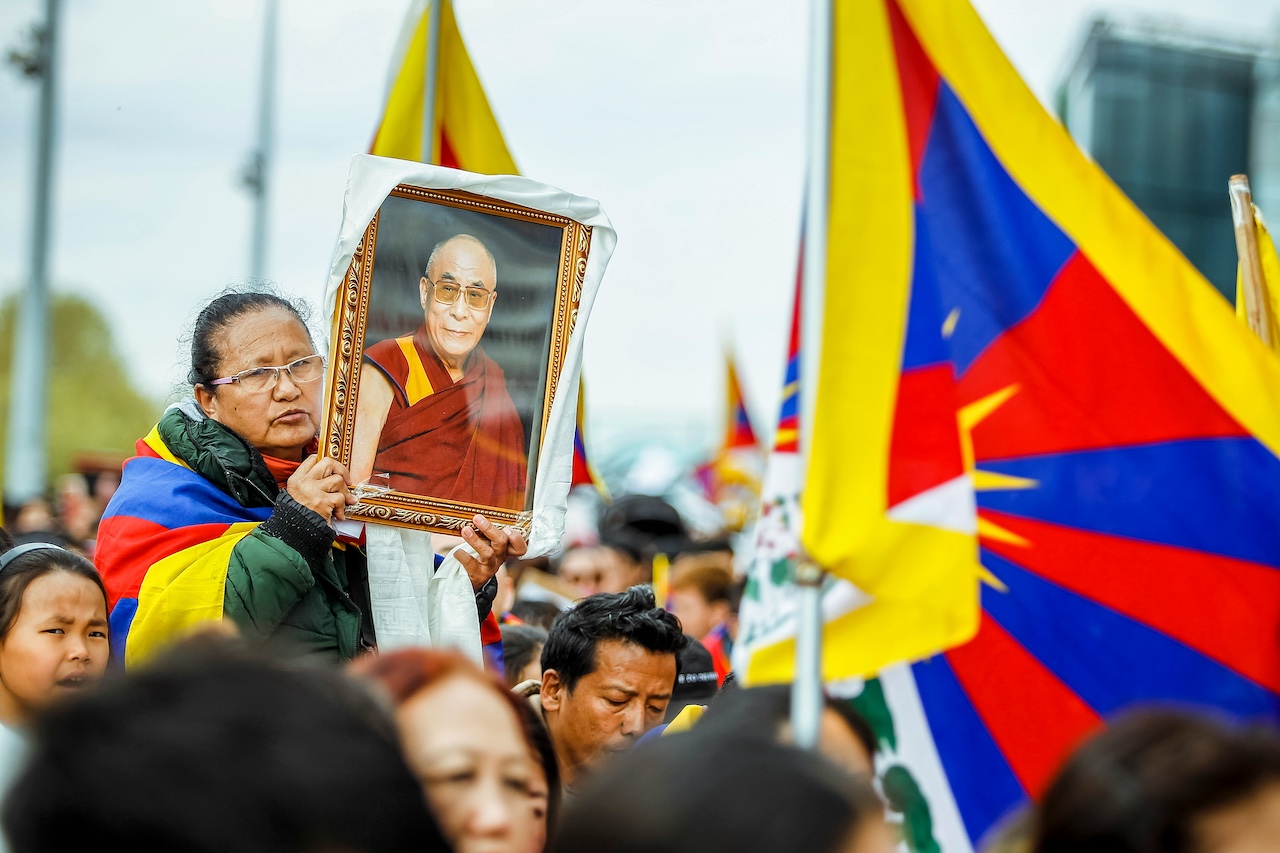Video How-to: Padmasmabhava: Key Points of Compassion & Generosity How to Chant Mantras Padmasambhava’s 4 Foundations 9 Tips from Teachers / Buddhist Teachings
How do we correctly chant Buddhist mantras for maximum benefit? Are there rules for guiding mantrayana practice? What are the prerequisites of mantra practice? In this presentation, we cover the prerequisites, the indispensibles, and offer 9 tips and practices...

How do we correctly chant Buddhist mantras for maximum benefit? Are there rules for guiding mantrayana practice? What are the prerequisites of mantra practice? In this presentation, we cover the prerequisites, the indispensibles, and offer 9 tips and practices for maximizing the benefit of your mantra practice, starting with the four foundations of mantrayana as taught by Guru Rinpoche.
Video:
CONTENTS
00:00-01:59 Padmasmabhava’s Four Foundations Mantrayana
01:59-02:57 First and Second Foundations: Faith and Compassion
02:57-03:41 Two Qualifications: Bodhichitta Intention and Faith
03:41-05:53 The Story of the Old Lady Mispronouncing Mantra
05:53-07:08 Padmasmabhava: Key Points of Compassion & Generosity
07:08-07:47 Guru Rinpoche’s Key Point of Samaya “free from flaws”
07:47-09:04 10 Bodhisattva Vows: Samantabhadra
09:42-10:23 How to Optimize Mantra Practice: Tips
10:23-12:03 Lama Zopa: Just do it — it all has value
12:03-13:06 Listening to mantras instead of reciting?
13:06-13:52 Dr. Alexander Berzin: No one way to chant
13:52-14:24 TIP 1 from Teachings: Quality Rather than Quantity
14:24-15:17 TIP 2 Every Syllable Must be Pronounced: the Dalai Lama
15:17-16:20 TIP 3 Just Do It — Practice “no matter what”
16:20-17:49 TIP 4 Volume: How loud? Depends on…
17:49- TIP 5 Musicality: Chanted to Melody for Merit
18:55-20:04 Tip 6 Mantra Can be a Complete Practice
20:07-20:42 TIP 7 Quantity: Extra Repetitions for Merit
20:42-21:00 TIP 8 Chant mindfully
21:00- TIP 9 How to Make Up for Mistakes
Guru Rinpoche, the great Lotus Born Padmasambhava, advised his great disciple Lady Yeshe Tsogyal on how to practice mantrayana. He said, in his teaching:
You must possess the key point of faith, free from fluctuation, like a river.
You must possess the key point of compassion free from enmity, like the sun.
You must possess the key point of generosity free from prejudice, like a spring of drinking water.
You must possess the key point of samaya free from flaws, like a crystal ball.
This is the foundation for practicing mantra yana. All four of these are far more important than mechanics like “proper pronunciation.”
What did Guru Rinpoche mean when he talked about the key points of faith and compassion? For mantra, or any other Buddhist practice to have a profound impact in our lives, we have to start from the right place — before we even worry about how to pronounce the mantra.
For example, every location on a map needs two coordinates. For mantra, the two coordinates are faith and compassion. In Buddhism, faith arises from Wisdom, not blind adherence to doctrine. For this reason, in Mantrayana, the two wings of the bird of Enlightenment are Wisdom and Compassion.
Put another way, to practice Mantrayana, in a worthwhile way, we have to be motivated by Bodhichitta, the intention to benefit all sentient beings. Without that motivation, it is not a Mahayana Buddhist practice. Once we have the motivation, we have to have the Wisdom of Faith.
We have faith in the correctness of the teachings, the Dharma, the Buddha, and our lineages of teachers. With that faith, motivated by our compassion and Bodhichitta, we have all the qualifications we need to practice mantrayana.
The concept of faith without fluctuation is best expressed in the story of the humble lady who chanted the six syllable mantra every day for many years. The story as taught in lineage goes like this:
“In ancient times, there lived an old lady who diligently recited the “Brilliant Mantra of Six Words Om mani padme hum” for many years.
One day, a realized Buddhist master happened to pass by; from a distance, he saw the house enveloped in a luminous glow, and thought that there must be a practitioner with great achievements inside. Upon entering, he saw an illiterate elderly lady reciting the mantra who was even mispronouncing the last word. With good intention, the master corrected her mistake—only to find that, as he left the house and looked back, the glow from within the house had vanished.
The old lady was filled with remorse after the master corrected her pronunciation, thinking that her mistake in pronunciation had negated all those years of practice. This, in turn, caused her to lose focus in her recitation and any spiritual response from it.
When the master realized what had happened, he went back and told the old lady that he misremembered, and she should continue her recitations as before; that is, her pronunciation was not wrong. Before the master left, he looked back to see that the house was glowing once again.”
This shows that the core of mantra recitation lies in the sincerity of our heart and the focus of our mind and our faith.
The second and third great instructions from Guru Rinpoche were “You must possess the key point of compassion free from enmity, like the sun. You must possess the key point of generosity free from prejudice, like a spring of drinking water.
His Eminence Garchen Rinpoche strongly emphasizes these points at many of his mantra teachings. He said, “the main requirement for mantra chanting of any Enlightened Deity according to the teachings, is Bodhichitta intention.”
In other words, the main requirement for practice is the intention to become Enlightened for the benefit of all sentient beings.
Mantra yana is a core practice within the great vehicle of Mahayana — where we generously accept our role as a Bodhisattva, with the promise to help others. This makes Bodhichitta and generosity the most important mantra qualification.
Guru Rinpoche’s last foundation for mantrayana practice is “You must possess the key point of samaya free from flaws, like a crystal ball.”
What is our Samaya? When we take Buddhist Refuge, or take empowerment with a teacher and guide, we take the Bodhisattva Vow. This is our unbreakable samaya. For mantra to be effective we must keep the Bodhisattva Vows. This is sometimes called the Ten Vows of Samantabadhra, which are found in the Samantabhadra-caryā-praṇidhānam:
I vow to pay homage to all the Buddhas and Bodhisattvas.
I vow to praise the virtues of the Buddhas and Bodhisattvas.
I vow to serve and make offerings to the Buddhas and Bodhisattvas.
I vow to confess past misdeeds and uphold the precepts.
I vow to rejoice in the merit and virtues of Buddhas, Bodhisattvas and all sentient beings.
I vow to ask the Buddhas and Bodhisattvas to teach the Dharma.
I vow to ask the Buddhas and Bodhisattvas to refrain from entering nirvana.
I vow to always follow the Buddhas’ teachings.
I vow to benefit all sentient beings.
I vow to dedicate the merit from all practices to the liberation of all beings.
With these four foundations of Guru Rinpoche in mind, what can we expect in terms of benefits. We covered these in depth in another presentation, the 9 Benefits of Mantra as taught by Guru Rinpoche, linked at the information icon. We also covered extensively the method of using your mantra support, which is your mala in another video linked above.
In the rest of this presentation, we’ll focus simply on how to optimize mantra practice.
An important starting tip is: don’t let anyone tell you, that you are doing it all wrong, and your practice is worth nothing, that you’ve wasted years pronouncing it wrong. Like the lovely woman who practiced in her home that glowed with the light of her faith, as long as you practice with faith and Bodhichitta, you’re doing it right.
Even if you mispronounce, chant too fast, too loud or too frantically, it all has value; as long as you have the intention to benefit all sentient beings and aspire to the cause for Enlightenment. Even if you didn’t understand the practice instructions, you’re mantra work still has great value, planting, as Lama Zopa explained in his book The Power of Mantra, the “seeds of virtue.”
If you chant mantras in your own native language, instead of the original Sanskrit, you are still practicing wonderfully, because at least you are practicing.
If you chant mantra too quickly, because you only have a five minute break, you’re amazing. At least you practiced.
If you have practiced your mantra with faith for years, not realizing it is pronounced a different way, trust that you still benefitted.
In this presentation, we’re simply focused on advanced techniques to perfect your practice.
Having qualified that any practice is better than no practice, it is still valuable to practice as correctly as possible. Even though mispronouncing mantras with faith may still be quite effective, it is valuable to mindfully attempt to pronounce correctly. Even though we’re in a hurry, it’s still best to slow it down and concentrate.
Before we describe the nine advanced tips for mantra recitation, what about just listening to mantras? Although listening to mantras is not as profound as actually reciting, it is still valuable. You are hearing Sacred Dharma, which is always beneficial.
Listening to someone chanting — especially with a beautiful voice, or tone — can be very empowering. Also, for teaching, it can be helpful to hear it chanted correctly in Sanskrit, as we demonstrate in our Sanskrit chanting series, here on the Buddha Weekly Channel.
Ultimately, though, the goal is to participate beyond simply listening. You can recite silently, outloud, at a whisper, or musically, as you prefer, but the idea is to bring your focus to the sacred Dharma, as expressed in mantras transmitted by the Buddha.
In fact there is no one way to recite or practice mantras. As explained by Dr. Alexander Berzin. He wrote:
“As I’ve explained, there are many different ways of reciting mantras, loud, soft, just in our mind, visualizing the letters of the mantra rather than saying the mantra in our mind or out loud.
There are many, many different types of mantra practices. But whether or not we are accompanying our recitation with a visualization, it is important to generate a special state of mind while reciting – either compassion, the understanding of voidness, and so on. “
The first, and most often repeated tip in the teachings is Quality rather than quantity. Even people engaging in counting retreats, where the goal is hundreds of thousands of repetitions in a retreat format should remember that quality is better than numbers. Completing 100,000 repetitions, without mindfulness isn’t as valuable as 5,000 carefully and mindfully chanted mantras.
The second tip or practice instruction most often given is that Mantras cannot be chanted too fast, or too slow as long as you are including every syllable and mindfully focused on them.
Dr. Alexander Berzin gave the best description of how to chant:
“The speed with which we recite the mantras depends on us. The point is not to leave out any syllables. If you ever hear His Holiness the Dalai Lama recite mantras, it’s faster than practically anybody I’ve ever heard in my life – the same thing for reciting a text or reciting anything – yet every syllable is distinct and clear.”
The third tip is, just do it. Sometimes we obsess so much over perfect practice, we end up skipping today because of non perfect circumstances. We think, oh, I missed the morning session, so I’ll skip for today. Or, it’s too noisy here, I’ll do it later when I’m alone. I’m too stressed out right now, I’ll do it tomorrow.
Instead, just practice late, practice with a headache, do fifty instead of 1000 repetitions. If you wait for perfect circumstances, you’ll be a practitioner in name only. The goal of practice is to actually practice, not to be rigid or dogmatic.
The fourth tip is volume. This is one of the most often asked questions. “How loud do I chant mantras?”
General advice from most teachers is that if you are in public or around other people, mantras should be softly chanted so that you can hear, but others cannot. The goal is not to disturb others. For example, at a counting retreat, generally low volume is desirable.
On the other hand, for celebratory mantras that express our devotion, often known as name praise mantras, a joyful tone is appropriate. For example, when starting a group practice celebrating Amitabha or Avaloktiteshvara, we may musically and joyfully chant our mantras.
For serious practice, and supplication mantras, which are mantras that request activities of Enlightened deities, these are normally outloud, but not at a disturbing volume. If you are alone, as loud as you like, but in public, or group practice with respect for others around you.
Tip five, is musicality. Mantras chanted to a melody or musically tend to be name or praise devotional mantras, or mantras that when repeated for thousands of repetitions become sleep-inducing. Ultimately, to chant musically, or tonelessly is your own preference, unless your specific lineage advises otherwise.
For example, if we are chanting healing mantras, it can be inspirational and healing to do so melodically. For this reason, Medicine Buddha mantras, and mantras such as Om Mani Padme Hum or Tara’s mantras are often musically chanted. The sense of joy and celebration reinforces the meditation. Musically chanting mantras is a celebratory practice, and highly meritorious, benefiting all sentient beings.
Tip six, is to remember Mantra can be a complete practice. Often, when we are busy, we ask our teachers, “what if I don’t have time for my practice commitments?” Many teachers simply reply, “You have time for a mantra, don’t you?”
This means we can make mantras the focus of our practice. To make it a complete practice, it is vital to always begin by taking refuge in the Three Jewels. This can be as simple as saying “I take refuge in the Three Jewels, the Buddha, the Dharma and Sangha, until I reach Enlightenment for the benefit of all sentient beings.” This includes both Refuge and the all-important Bodhichitta intention.
Especially important in this case, is to always dedicate the merit of your mantra recitation to the benefit of all sentient beings. This makes it a complete practice.
Tip seven is quantity. Even though quality is more important than quantity, teachers advise us to recite a certain number of mantras to accumulate merit, but also in case we miss syllables or make mistakes.
The traditional number is 108, with the final eight making up for any mistakes in recitation, but for longer mantras, or when you are in a rush, you can chant 7, 21, or 27 times.
Tip 8 is to remain mindful. Although you can chant mantras when walking, doing chores, driving and at other times, as a reinforcing practice, these tasks make it less meditative.
Tip 9, our final tip is how to make up for mistakes. There are three ways you can remedy your mistakes in pronunciation. One, is to recite 10 percent more than you count. The more elaborate method, especially on counting retreats, is to recite every letter of the Sanskrit alphabet. This makes up for any missing sounds. The final method is to use one of the Dharanis to repair recitation mistakes.
We dedicate the merit of this presentation to the cause for Enlightenment for the benefit of all sentient beings.

 Konoly
Konoly 
































